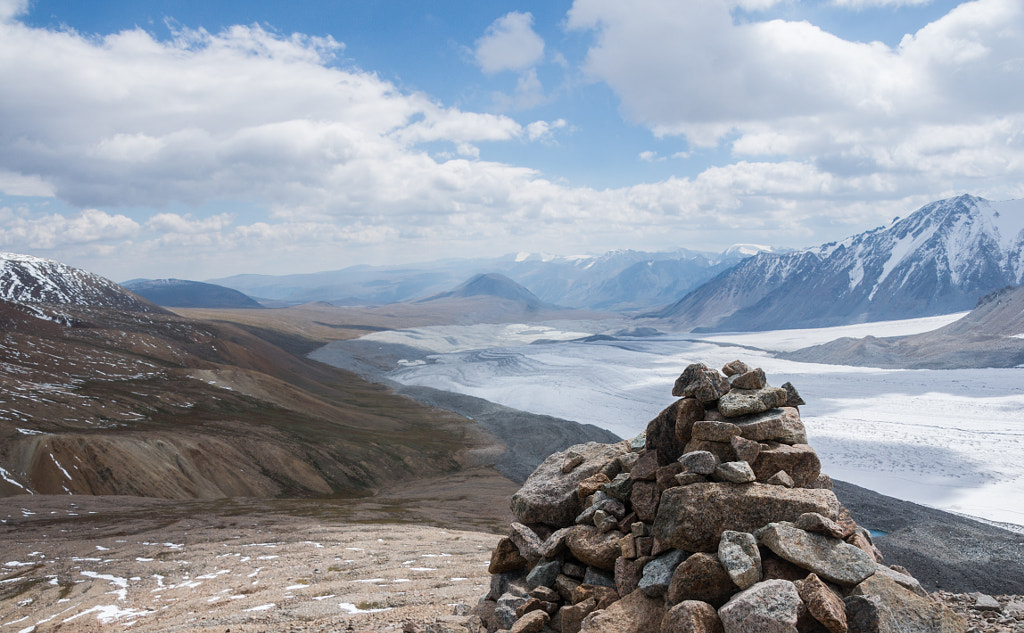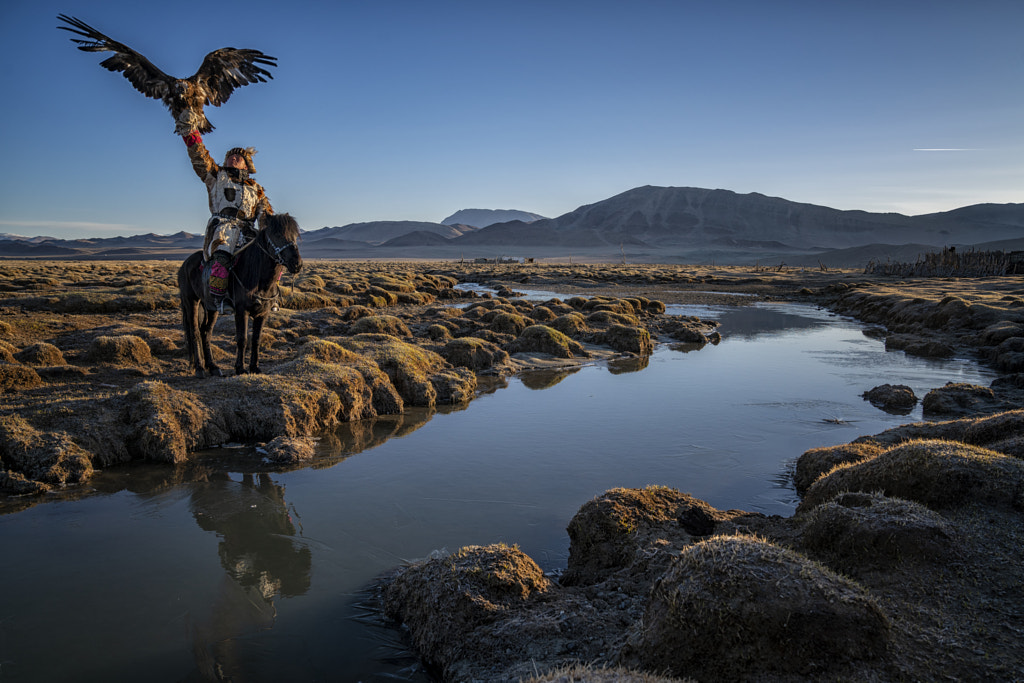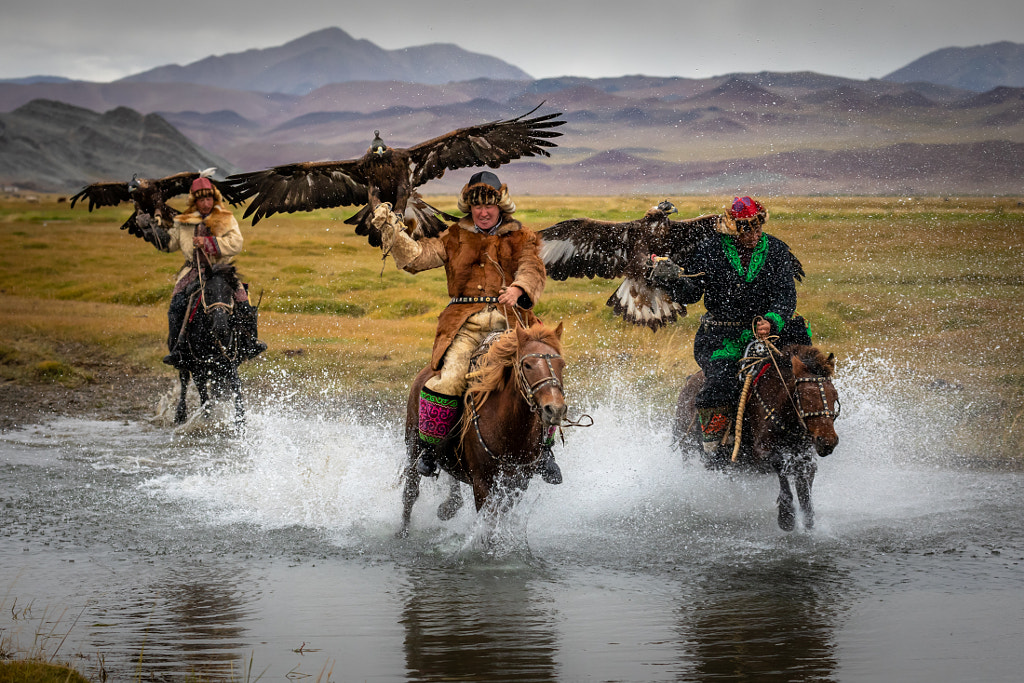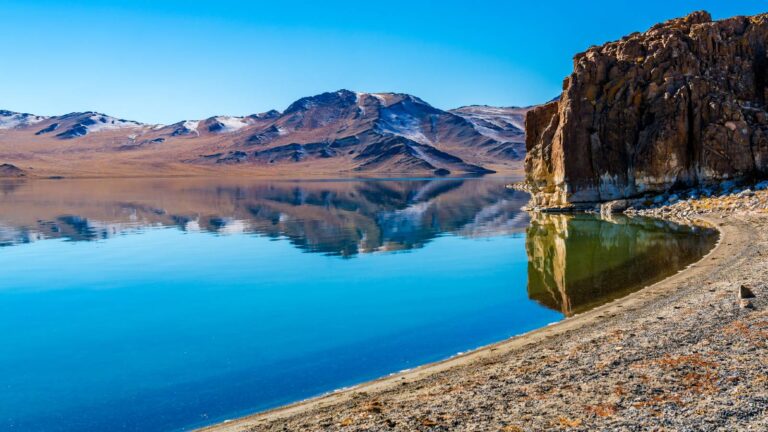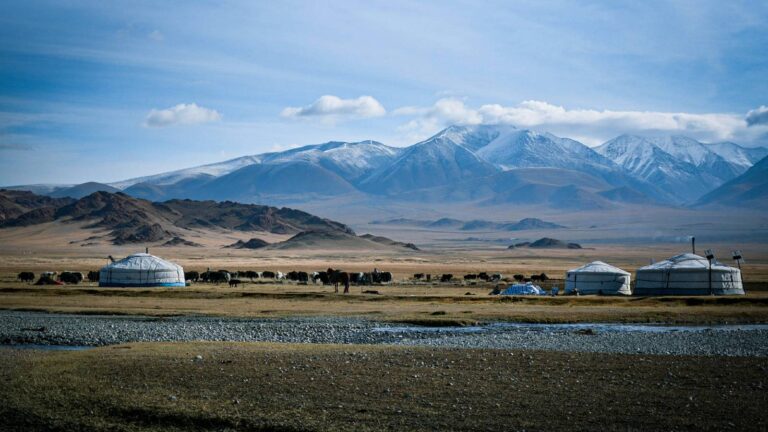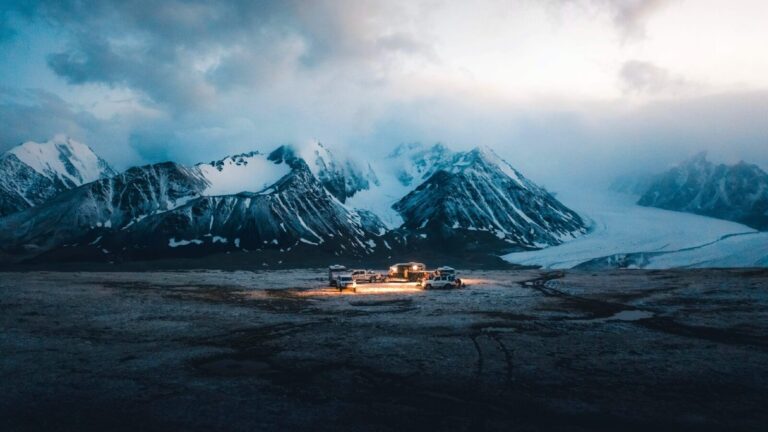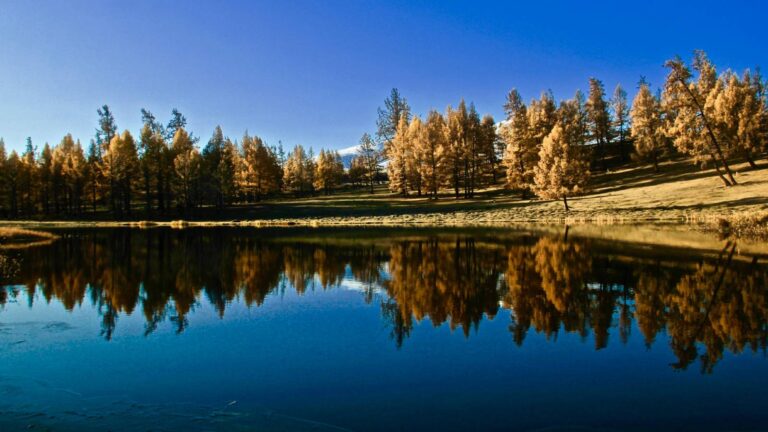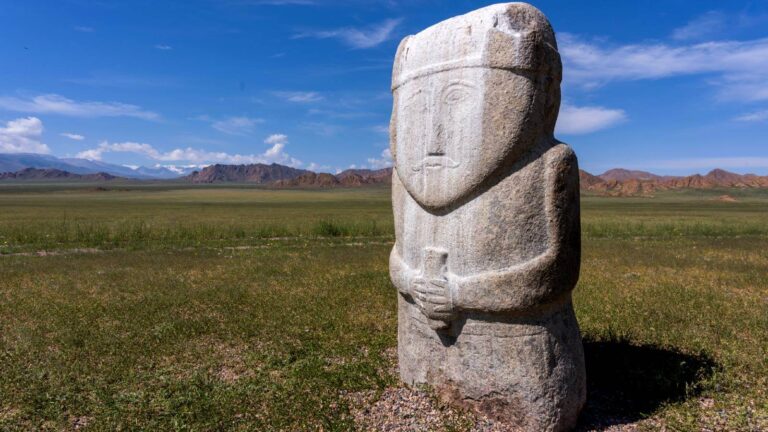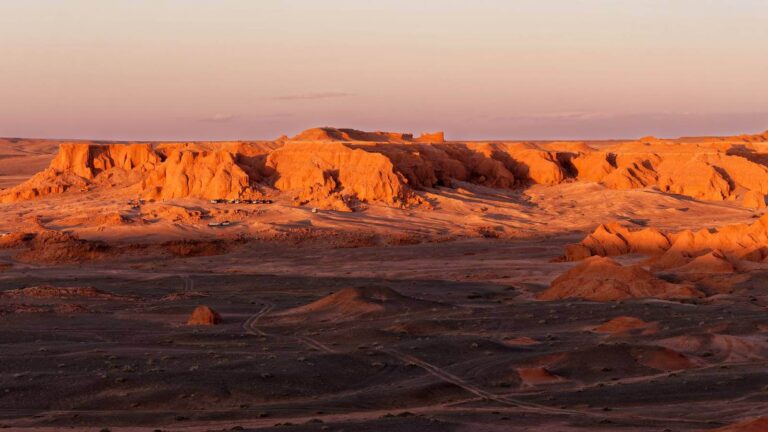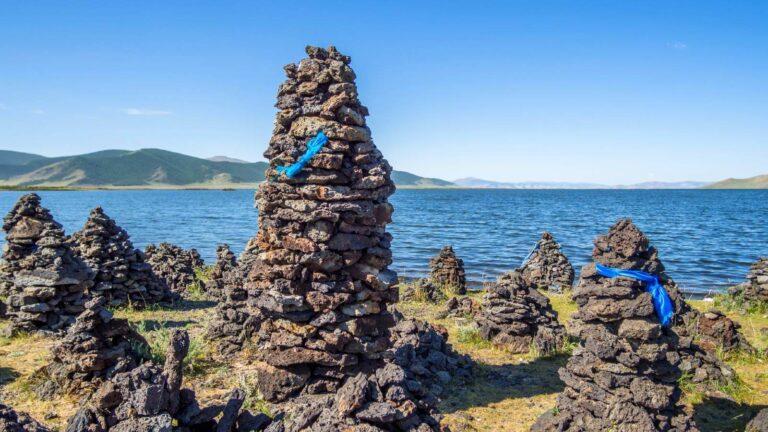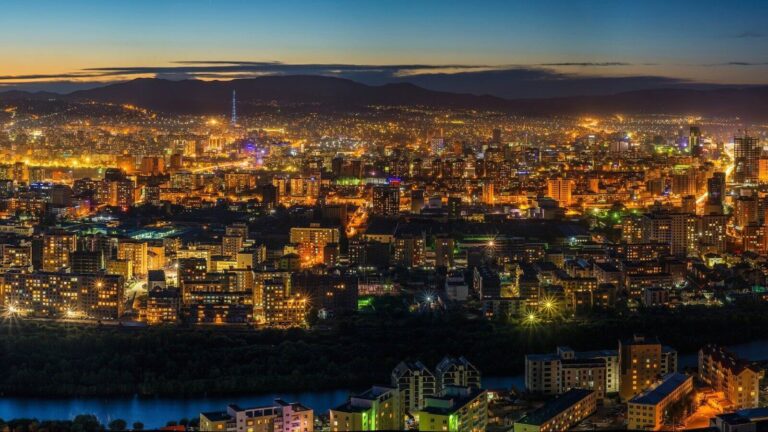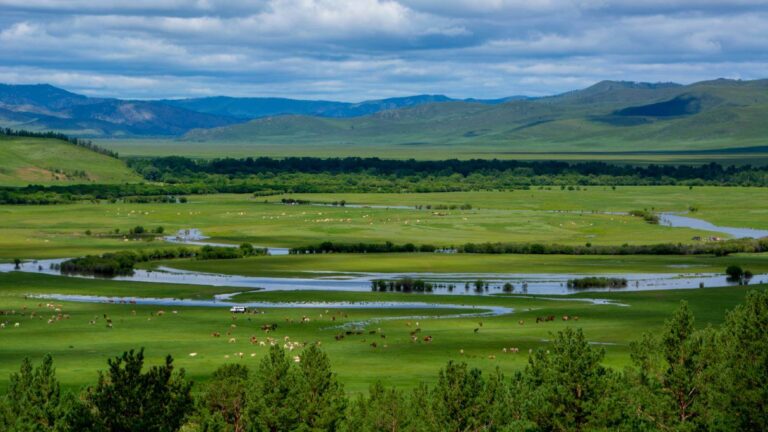Given its remote location, most visitors choose to fly into Bayan-Ulgii from Ulaanbaatar to arrive at Ulgii Airport. Otherwise Ulgii is the main hub for those arriving on daily buses from the capital for what is an epic 30 to 40 hour trip. There are also buses from Kazakhstan that arrive via Russia.
National parks and nature reserves are a big feature of Western Mongolia and Bayan-Ulgii has some of the country’s most memorable landscapes.
Remote Altai Tavan Bogd National Park is one of its finest and here you’ll find Mongolia’s highest mountain, the snow-capped Khuiten Uul (4374m) which rewards trekkers with stunning panoramas overlooking its wild landscapes. Hikers and mountain climbers will also want to check out the rugged mountains of Tavan Bogd (Five Saints) that stretches along the border between Mongolia, Russia and China. The park is also home to shimmering twin lakes and plenty of wildlife-watching including argali sheep, ibex and maral (Asiatic red deer).
The mountainous region of Khökh Serkh Strictly Protected Area is another great place for wildlife and home to snow leopard as well as argali sheep and ibex.
Bayan-Ulgii is famous for the ancient practice of Kazakh eagle hunting, a traditional art form where hunters train eagles to capture prey. There are a number of eagle hunting festivals throughout th the year including the Ulgii Eagle Festival, Altai Kazakh Eagle Festival and the Spring Eagle Hunting Festival in Khökh Serkh Strictly Protected Area. Interest in the activity has soared worldwide in since the release of 2016 film The Eagle Huntress.
Bayan-Ulgii has a rich and diverse cultural history that’s intertwined with the nomadic traditions of the Kazakh people. Inhabited for over 12,000 years, Bayan-Ulgii has long been a hub of cultural and historical significance.
From the ancient Silk Road to the present day, the region has witnessed the influences of Turks, Scythians, Huns, Tuvans, Uighurs, Mongols, and Kazakhs, as evidence by treasure trove of ancient art and well preserved archaeological sites including petroglyphs, deer stones, tombs and burial mounds.
Given around 90% of the region comprises Kazakh people, Bayan-Ulgii has a distinctly different cultural flavour to the rest of Mongolia. During the 1840s, Kazakhs migrated to the Altai region, utilising the highland pastures for summer grazing. Following the Mongolian Revolution in 1921, a permanent border was established, leading to Kazakh nomads residing in Mongolia.
Bayan-Ulgii is famous for its traditional art of eagle hunting that’s been practiced for thousands of years. The most attended event is the Ulgii Eagle Festival in October, with eagle hunting demonstrations as well as traditional horse and camel races. In March there’s the Spring Eagle Hunting Festival held at Khökh Serkh Strictly Protected Area, while the Altai Kazakh Eagle Festival is held in September and involves many traditional games by Kazakh nomads here.
Mongolia’s westernmost province is a region dominated by the Altai Mountains and mighty peaks that rise to over 4000m, many which are permanently covered with glaciers and snow. Among it you’ll find wild pristine landscapes of beguiling freshwater lakes valleys with green grassy steppe home to roaming livestock in their millions.
Bayan-Ulgii has a diverse climate and temperature here range from relatively cool summers of 10°C to 30°C and cold long winters when temperature can plummet to minus 30°C.
The economy of Bayan-Ulgii is primarily based on agriculture, livestock farming and traditional nomadic practices. In addition, Bayan-Ulgii also has rich mineral resources, including deposits of gold, copper, and coal. Tourism is another emerging sector, attracting visitors with its unique cultural heritage such as eagle hunting and trekking in the Altai Mountains.

